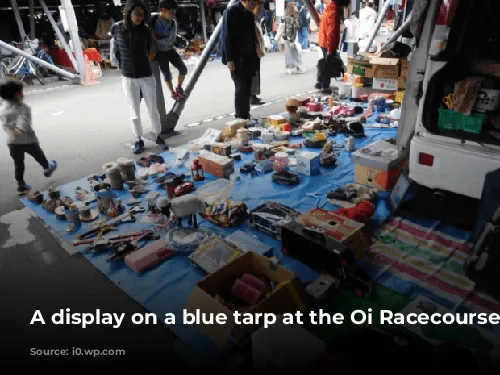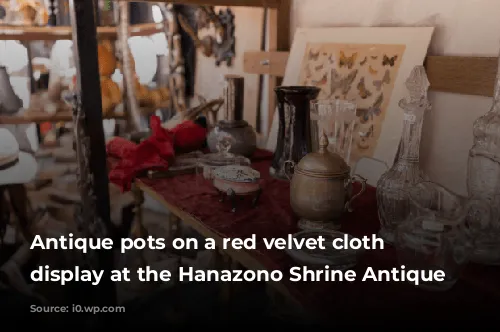Dive into the heart of Tokyo’s culture by browsing its captivating flea markets! These bustling marketplaces offer an eclectic mix of antique and vintage treasures, traditional Japanese crafts, and delicious street food. Join us as we explore some of Tokyo’s most renowned flea markets!
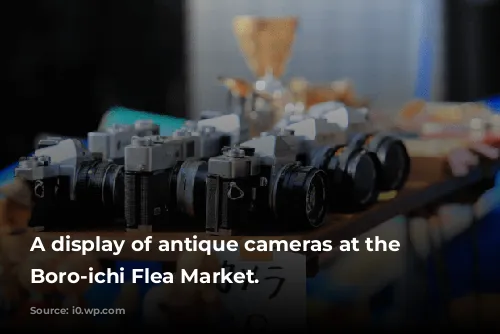
A History of Secondhand Delights
Flea markets have a rich history in Tokyo, dating back to the Edo period. During this time, it was common for people to sell their used possessions in markets held on sacred temple grounds or public areas.
The Meiji period brought modernization and Western influences to Tokyo, leading to the establishment of modern shopping centers. However, the tradition of flea markets persisted, with new markets blossoming in areas like Ueno, Asakusa, and Akihabara.
After World War II, Tokyo experienced rapid economic growth, and the demand for affordable and second-hand goods soared. This renewed popularity led to the emergence of markets in vibrant neighborhoods such as Shinjuku, Shibuya, and Harajuku.
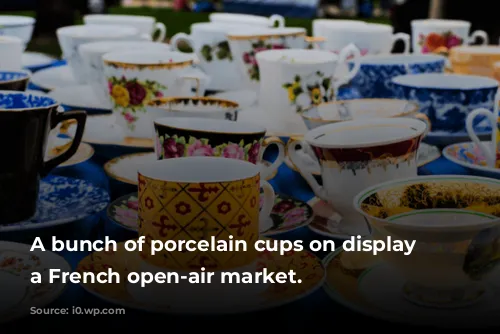
The “Free Market” and its Origins
The Japanese term “フリーマーケット” (furī māketto) is a borrowed word, directly translated from the English “free market”. This term first emerged in Japan during the 1970s, a time of cultural exchange between Japan and the West.
The concept of flea markets, as we know them today, originated in Europe, where they were called “marché aux puces” in French, meaning “flea market”. This term arose due to the belief that the used goods sold at these markets often carried fleas.
In Japan, the first flea markets were called “bazaar markets” in the early 20th century. It wasn’t until much later, with the growing popularity of flea markets, that the term “フリーマーケット” gained traction.
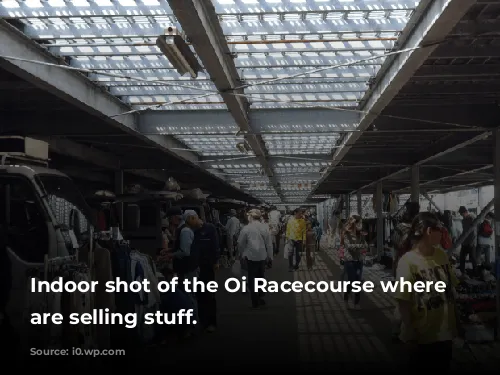
A Common Term with a Unique Twist
Today, “フリーマーケット” remains the most widely used term for flea markets in Japan. However, “バザー” (bazā) is still occasionally used, primarily for charity or fundraising events that include a market component.
The Japanese character “フリー” can refer to both “flea” and “free,” causing potential confusion. To ensure clarity and accessibility, the Japan Flea Market Association adopted the term “Free Market”, effectively bridging the gap between English and Japanese meanings.
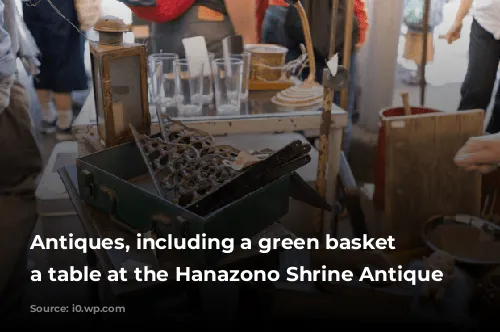
A Treasure Trove for Locals and Tourists Alike
Tokyo’s flea markets are a captivating destination for locals and tourists, offering a unique shopping experience. From antique furniture and ceramics to vintage clothing and toys, the diversity of goods on display is truly remarkable. Many markets are held on weekends and holidays, drawing in crowds of eager bargain hunters.
While the popularity of flea markets has fluctuated over time, they remain an integral part of Tokyo’s cultural heritage, showcasing the city’s rich history and traditions. Now, let’s delve into some of the most popular flea markets in Tokyo!
The Setagaya Boro-ichi Market: A Time Capsule of Tradition
The Setagaya Boro-ichi Market is one of Tokyo’s oldest and most renowned flea markets, with a history spanning over 430 years. This market comes alive twice a year, on December 15-16 and January 15-16, in the charming Setagaya district of Tokyo.
Known for its vibrant and festive atmosphere, the market boasts over 700 vendors selling a dazzling array of goods, including antiques, vintage clothing, traditional Japanese crafts, and delectable street food.
Some of the most sought-after items at the market include old-fashioned Japanese toys, handcrafted pottery, and, notably, vintage kimono and obi.
The Setagaya Boro-ichi Market is deeply rooted in history and tradition. It originally served as a platform for farmers to sell their produce during the Edo period. Over the centuries, it has transformed into a thriving hub of local commerce and community. The market’s name, “boro-ichi,” derives from the Japanese word for “rag market,” reflecting its historical focus on secondhand goods.
Beyond the shopping, the Setagaya Boro-ichi Market features traditional Japanese street performers and musicians, further enhancing the festive ambiance. Visitors can indulge in a delightful assortment of local street food, including yakisoba (fried noodles), takoyaki (octopus balls), and karaage (Japanese-style fried chicken).
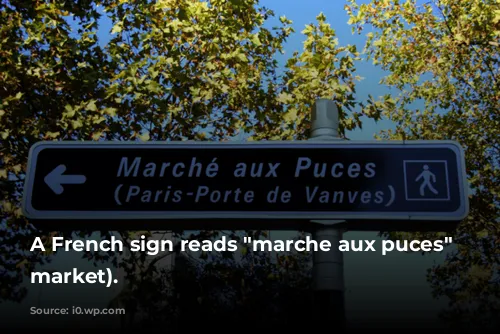
The Hanazono Shrine Antique Market: A Blend of Tradition and Trend
The Hanazono Shrine Antique Market is one of Tokyo’s most vibrant and popular flea markets. Held every Sunday at the Hanazono Shrine in Shinjuku, one of Tokyo’s most colorful neighborhoods, the market is a true gem.
Over 500 stalls are brimming with a diverse collection of items, including antique and vintage goods, traditional Japanese crafts, clothing, accessories, toys, and much more.
Popular items at the market include kimono, yukata (summer kimono), vintage vinyl records, and old-fashioned Japanese toys.
A unique feature of this market is its lively and festive atmosphere, further enhanced by the market’s location within a traditional Shinto shrine. This adds an extra layer of charm and ambiance to the event.
The market is a favorite among locals and tourists alike, offering a chance to unearth unique treasures while soaking up the energy of one of Tokyo’s most vibrant neighborhoods.
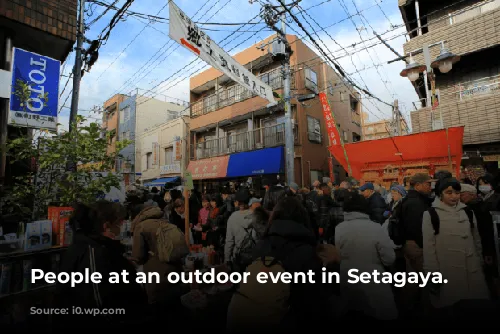
The Oi Racecourse Flea Market: Where Shopping Meets Sport
The Oi Racecourse Flea Market is a renowned outdoor market held every weekend at the Oi Racecourse in Shinagawa, Tokyo. Open from 9:00 am to 3:00 pm on Saturdays and Sundays, with surprisingly free admission, the market is a true delight.
Over 700 stalls showcase a wide array of items, including antiques, vintage goods, clothing, jewelry, toys, and much more. While many items are secondhand, there’s a good selection of new and handmade goods as well.
This market is a haven for bargain hunters, with many vendors open to negotiation. Some of the most sought-after items at the market include vintage clothing and accessories, old-fashioned Japanese toys, and traditional Japanese crafts.
A distinctive feature of the Oi Racecourse Flea Market is its unique location within one of Tokyo’s most prominent horse racing tracks. Visitors can enjoy a day of browsing and shopping before heading over to the track to witness the excitement of horse racing.
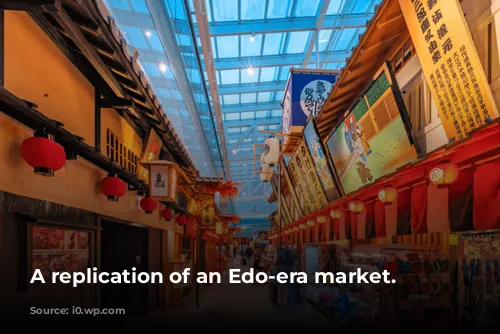
Tokyo’s Flea Market Mosaic: A Tapestry of Culture and History
Tokyo’s flea markets are a must-visit for anyone seeking vintage and antique treasures, traditional Japanese crafts, and mouthwatering street food. From the lively Oedo Antique Market to the charming Hanazono Shrine Flea Market and the unique Oi Racecourse Flea Market, Tokyo offers a captivating array of flea markets to explore.
At these markets, visitors can discover unique and exciting items while immersing themselves in Tokyo’s vibrant culture and rich history.
So, if you’re planning a trip to Tokyo, be sure to add one of these flea markets to your itinerary for an unforgettable experience!
Have you ever explored a flea market in Tokyo? Share your experience in the comments below!
